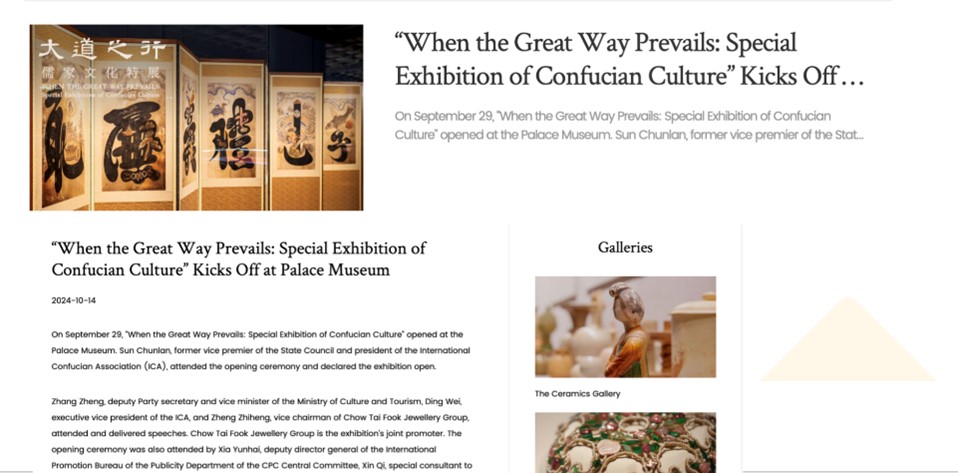Intersemiotic Translation in Hypertext-Based Digital Communication
Abstract
Against the digital backdrop, this research investigates the intersemiotic translation strategies of hypertext-based bilingual cultural publicity websites, seeking to address the intricacies of meaning-making in digital environments. It aims to probe into the efficient intersemiotic translation strategies regarding the intersection of Social Semiotics and translation studies. The case study explicates how to deploy hypertextual devices that adapt to target users' cultural norms and aesthetic preferences. The translation strategies (i.e. user-centered approach, compensation, addition, interdiscursive presentation, omission, and transcreation) were drawn on how hypertextuality facilitates dynamic navigation and intercultural communication. The findings indicate the application of multimodal discourse analysis in translation studies by revealing the potential of intersemiotic translation in promoting cross-cultural communication, digital literacy, and user experience in the digital sphere. The study contributes to the existing research by shedding light on the extension of research scope to multimodal translation, building a more holistic approach to website translation practice of cultural institutions.
References
Bernal-Merino, M. A. (2020). Key concepts in game localisation quality. In The Palgrave handbook of audiovisual translation and media accessibility (pp. 297-314). Palgrave Macmillan.
Chen, X. (2018). Representing cultures through language and image: A multimodal approach to translations of the Chinese classic Mulan. Perspectives: Studies in Translatology, 26(2), 214-231.
Collins, R. W. (2002). Software localization for Internet software: Issues and methods. IEEE Software, 19(2), 74-80.
Eco, U. (2001). Experiences in translation. University of Toronto Press.
Fairclough, N. (1995). Critical discourse analysis: The critical study of language. Longman.
Feng, D. W. (2023). Multimodal Chinese discourse: Understanding communication and society in contemporary China. Routledge.
Giannakopoulou, V. (2019). Introduction: Intersemiotic translation as adaptation: In memoriam of Laurence Raw. Adaptation, 12(3), 199-205.
Gottlieb, H. (2017). Semiotics and translation. In The Routledge handbook of translation studies and linguistics (pp. 45-63). Routledge.
Qian, S., & Feng, D. (2020). Intersemiotic shifts in the translation of Chinese costume drama subtitles. In Multimodal approaches to Chinese-English translation and interpreting. Routledge.
Hofstede, G. (2001). Culture’s consequences: Comparing values, behaviors, institutions, and organizations across nations (2nd ed.). Sage Publications.
Hu, Z. (2007). Multimodality in the study of social semiotics. Language Teaching and Research, 2007(01), 1-10.
Jacques, M. (2012). When China rules the world: The rise of the middle kingdom and the end of the western world [Greatly updated and expanded]. Penguin UK.
Jakobson, R. (2004). On linguistic aspects of translation. In L. Venuti (Ed.), The translation studies reader (2nd ed., pp. 113–118). Routledge. (Original work published 1959)
Jiménez-Crespo, M. A. (2013). Translation and web localization. Routledge.
Kress, G., & Van Leeuwen, T. (2020). Reading images: The grammar of visual design (2nd ed.). Routledge.
Leibold, J. (2010). More than a category: Han supremacism on the Chinese Internet. The China Quarterly, 203, 539-559.
Lemke, J. L. (2002). Travels in hypermodality. Visual Communication, 1(3), 299-325.
Li, D., & Wang, K. (2009). Parallel text comparison mode and English translation of tourism texts. China Translation, 2009(4), 54.
Li, D., & Wang, K. (2010). Text analysis and translation strategies for slogan translation. China Translation, 2010(1), 65-70.
Loddo, O. G., Addis, A., & Lorini, G. (2022). Intersemiotic translation of contracts into digital environments. Frontiers in Artificial Intelligence, 5, 963692. https://doi.org/10.3389/frai.2022.963692
Lu, J., & Wu, W. (2012). A study of the subtitles translation of the movie The Flowers of War from the perspective of multimodal discourse analysis. Shanghai Translation, 04, 36-38.
Mahbubani, K. (2012, December 28). The east will rise above the west. Financial Times.
Matamala, A., & Orero, P. (2021). Designing a course on audio description and defining the main competences of the future professional. Linguistica Antverpiensia, New Series – Themes in Translation Studies, 6. https://doi.org/10.52034/lanstts.v6i.195
Newmark, P. (1981). Approaches to translation (Language Teaching Methodology Series). Studies in Second Language Acquisition, 7(1), 114-115.
O’ Halloran, K. (Ed.). (2004). Multimodal discourse analysis: Systemic functional perspectives. A&C Black.
Pallud, J., & Straub, D. W. (2014). Effective website design for experience-influenced environments: The case of high culture museums. Information & Management, 51(3), 359-373. https://doi.org/10.1016/j.im.2014.02.010
Susam-Saraeva, Ş. (2021). Representing experiential knowledge: Who may translate whom? Translation Studies, 14(1), 84-95.
Toury, G. (1995). Descriptive translation studies and beyond. J. Benjamins Publishing.
Venuti, L. (2017). The translator’s invisibility: A history of translation. Routledge.
Yeung, J. (2007). Audio description in the Chinese world. In Media for All (pp. 231-244). Brill.
Zhang, D. (2009). Exploration of a comprehensive theoretical framework for multimodal discourse analysis. Chinese Foreign Languages, 6(01), 24-30.
Zhu, Y. (2007). Theoretical basis and research methods of multimodal discourse analysis. Foreign Languages Journal, 2007(05), 82-86.


This work is licensed under a Creative Commons Attribution 4.0 International License.
Copyright for this article is retained by the author(s), with first publication rights granted to the journal.
This is an open-access article distributed under the terms and conditions of the Creative Commons Attribution license (http://creativecommons.org/licenses/by/4.0/).








1.png)














